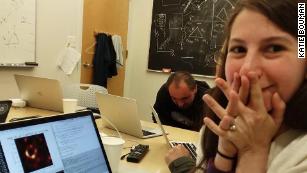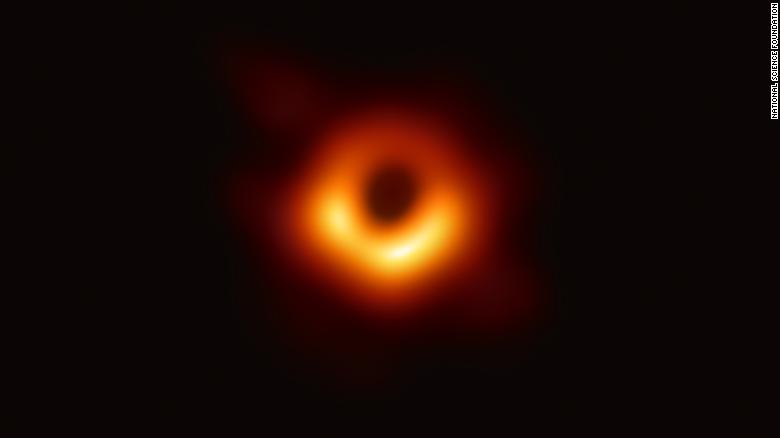Kijun Times
Kijun Times 는 교내 영어잡지,신문 동아리로 다양한 주제에 관한 이슈로 원고를 작성하며 영어 잡지를 만드는 동아리입니다.
매년 잡지 출판뿐만 아니라 자신의 진로와 관련된 개인기사, 모둠기사를 작성함으로써 영어 실력향상은 물론 주제에 제한이 없기 때문에 다양한 진로에 접목 가능합니다.
We are looking for a new journalist for The KIJUN TIMES.
Anyone can be a journalist for The KIJUN TIMES.

hat image of a black hole you saw everywhere today? Thank this grad student for making it possible |
|||||
|---|---|---|---|---|---|
| 이름 | 신현정 | 등록일 | 19.04.11 | 조회수 | 87 |
|
(CNN)Imagine trying to take a photo of an orange that's on the moon with your smartphone. It seems impossible. That's what it was like for scientists trying to capture an image of a black hole in space. Despite the tall order, an international team of more than 200 researchers unveiled the first-ever image of a black hole on Wednesday. The effort wouldn't have been possible without Katie Bouman, who developed a crucial algorithm that helped devise imaging methods. Three years ago, Bouman led the creation of an algorithm that eventually helped capture this first-of-its-kind image: a supermassive black hole and its shadow at the center of a galaxy known as M87. She was then a graduate student in computer science and artificial intelligence at the Massachusetts Institute of Technology. Black holes are extremely far away and compact, so taking a photo of one is no easy task. In addition, black holes by definition are supposed to be invisible -- although they can give off a shadow when they interact with the material around them. A global network of telescopes known as the Event Horizon Telescope project collected millions of gigabytes of data about M87 using a technique known as interferometry. However, there were still large gaps in the data that needed to be filled in. Her algorithm, and many others, helped fill in the gapsThat's where Bouman's algorithm -- along with several others -- came in. Using imaging algorithms like Bouman's, researchers created three scripted code pipelines to piece together the picture. They took the "sparse and noisy data" that the telescopes spit out and tried to make an image. For the past few years, Bouman directed the verification of images and selection of imaging parameters. "We developed ways to generate synthetic data and used different algorithms and tested blindly to see if we can recover an image," she told CNN. "We didn't want to just develop one algorithm. We wanted to develop many different algorithms that all have different assumptions built into them. If all of them recover the same general structure, then that builds your confidence." The result? A groundbreaking image of a lopsided, ring-like structure that Albert Einstein predicted more than a century ago in his theory of general relativity. In fact, the researchers had generated several photos and they all looked the same. The image of the black hole presented on Wednesday was not from any one method, but all the images from different algorithms that were blurred together. "No matter what we did, you would have to bend over backwards crazy to get something that wasn't this ring," Bouman said. Bouman was a crucial member of the imaging team"(Bouman) was a major part of one of the imaging subteams," said Vincent Fish, a research scientist at MIT's Haystack Observatory. "One of the insights Katie brought to our imaging group is that there are natural images," Fish said. "Just think about the photos you take with your camera phone -- they have certain properties. ... If you know what one pixel is, you have a good guess as to what the pixel is next to it." For example, there are areas that are smoother and areas that have sharp boundaries. Astronomical images share these properties, and you can mathematically encode these properties, Fish said. Junior members like Bouman made significant contributions to the project, he added. Of course, senior scientists worked on the project, but the imaging portion was mostly led by junior researchers, such as graduate students and post docs. "No one of us could've done it alone," Bouman said. "It came together because of lots of different people from many backgrounds." Bouman starts teaching as an assistant professor at California Institute of Technology in the fall. |
|||||
| 이전글 | Halloween Brexit delay could mean a summer nightmare for Theresa May |
|---|---|
| 다음글 | K-pop groups create a whole new world: Extensive narratives allow artists to do more than just music |

